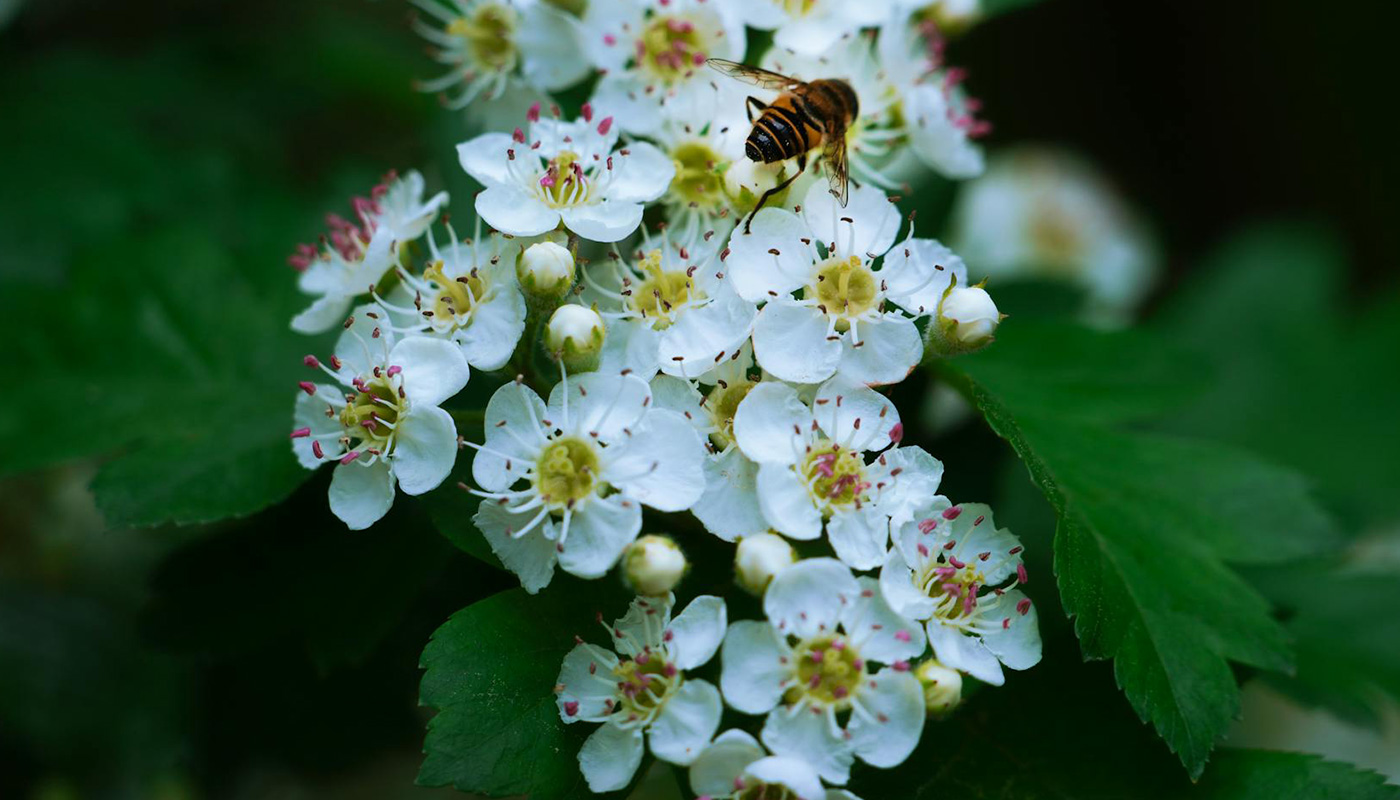
Tina Worboys | April 18, 2024

The delicate blossom of the Hawthorn marks the beginning of the hedgerow’s year. Another year in its, possibly, ancient life. It wasn’t until reading Wilding by Isabella Tree some years back that I realised how much we’d lost and why I should care. Nearly 50% of hedgerows have disappeared since WWII and with them the highways, habitats and food source for an alarming amount of species.
The lack of wildflower meadows was well documented (97% lost since the 1930s) but the humble hedgerow, the once centre of life, crucial to man and (many) beast, felt like a forgotten, yet extremely rich, cousin.
Planted by the Saxons and enhanced by the Normans, these spiky boundaries, teeming with life and economic value, became all things to all people through the middle ages. It was the well-tended garden and well stocked larder, abundant with fruits, berries, nettles and roots, for nutritious recipes to rough cloth for clothing and simple household furnishings. It was the much-lauded medicine cabinet for all manner of tinctures, teas and cure-alls. The local store for wood to make furniture, tools and cooking implements, as well as fuel. The hedge was so important that heavy sentences were dealt to those actively damaging its integrity.
These early hedgerows were created on a mound, with a ditch dug on one side to drain the field for a richer harvest. From dry slope to the damp ditch, this new topography created subtle changes in temperature and humidity offering habitat for a variety of wildlife as well as stabilising the soil for productive farming. Something we are seeing used to great effect in the new garden at Knepp today, where changes in level, alongside changes in substrate are creating varied habitats, far more complex than flat land could ever muster.
With such rich flora, from the blend of woody species, ramblers, climbers and wild plants within and below, brought fauna of every size. The harrier would predate on frogs and snakes, finches and thrushes were food for the hawks, moles and voles for the kestrel and a diverse buffet of insects for pretty much everything else, plus rabbits for the family table; the food chain was thriving.
Eric Thomas and John T White write in their simply titled book Hedgerow that “..the hedgerow provides the best possible statement of balance which exists between the work of man and his natural environment.” Planted by man and maintained for mutual benefit the hedgerow is a blueprint for working with nature. Wild by Design in bountiful action.
So the next time you’re facing yet another bill to replace a blown down fence panel, why not take note from our ancestors and consider a hedge. You may not need it for supplies but a tapestry hedge is a thing of beauty and a conduit for good. If you have the patience, and don’t mind your neighbours, then sapling packs are available from the Woodland Trust. If you need something quicker you can buy ready hedging by the metre, little troughs of fully mature hedging ready to simply drop into the garden.
Why not be further inspired and grow wild clematis, honeysuckle or dog rose through the tangle of branches. The thicker your hedge the more life you’ll support, not to mention diffusing the wind, softening outside noise and soaking up pollution. If you have the space try altering the topography. By creating peaks and troughs you’re multiplying the habitat potential as well as creating a corridor for all manner of wildlife to live in or pass through. Now surely that’s got to be better than fence posts and concrete.
Do you know someone who would like this post? Why not share and spread the hedgerow love?